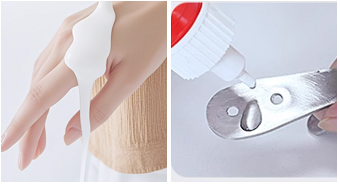Hydrophilic fumed silica, also known as pyrogenic silica, is a synthetic, amorphous, colloidal silicon dioxide. Its surface is characterized by a high concentration of silanol groups (-Si-OH), making it wettable by water and enabling it to form hydrogen bonds. This unique property, combined with its high purity and fine particle size, makes it an indispensable additive in a multitude of industries. One of the most critical parameters determining its performance is its Specific Surface Area (SSA), typically ranging from 50 to 400 m²/g. This guide explores how different SSAs of hydrophilic fumed silica tailor its functionality for various application scenarios.
The General Impact of Specific Surface Area (SSA) on Hydrophilic Fumed Silica Performance
The Specific Surface Area of fumed silica is inversely related to its primary particle size. Generally, for hydrophilic fumed silica:
Higher SSA means:
Increased number of surface silanol groups, leading to stronger hydrogen bonding networks.
More pronounced thickening, thixotropic, and gelling effects, especially in polar liquid systems.
Enhanced reinforcement in polar polymers.
Greater adsorption capacity for polar substances.
Potentially increased difficulty in dispersion, requiring sufficient shear energy.
Lower SSA means:
Milder thickening effects.
Often easier dispersion in certain systems.
Higher possible loadings in some formulations without excessive viscosity build-up.
Application Scenarios by Specific Surface Area (SSA)
1. Low Specific Surface Area (approx. 50 - 150 m²/g)
Hydrophilic fumed silicas in this SSA range have relatively larger primary particles and a less branched structure, leading to weaker inter-particle interactions.
Key Characteristics: Mild thickening, minimal impact on system viscosity, good anti-settling properties, relatively easy to disperse.
Typical Applications:
Waterborne Coatings and Inks:
Anti-settling agent: Prevents hard settling of pigments and fillers while contributing minimally to viscosity, maintaining good flow. An example is grades around 50 m²/g .
Improving flow and leveling: Can help improve film appearance in some formulations without significantly increasing viscosity.
Adhesives and Sealants (Polar Systems):
Used in water-based or polar solvent-based adhesives requiring lower application viscosity and basic thixotropy or anti-settling.
Can be blended with higher SSA grades for fine-tuning rheology.
Free-Flow and Anti-Caking Agent for Powders:
Suitable for some polar powders (e.g., certain food ingredients, agricultural chemicals) where moderate moisture adsorption is acceptable and excessive dustiness from finer particles is a concern.
Processing Aid in some Resins and Plastics:
Can improve flow or prevent filler settling in some polar resins (e.g., certain polyesters, polyurethane prepolymers) with controlled impact on final viscosity.
2. Medium Specific Surface Area (approx. 150 - 250 m²/g)
This is the most versatile and widely used SSA range for hydrophilic fumed silica, offering a good balance of thickening, thixotropy, anti-settling, and reinforcement. Grades around 200 m²/g are benchmarks in this category.
Key Characteristics: Significant thickening and thixotropic effects, good anti-sag and anti-settling properties, moderate reinforcement capabilities.
Typical Applications:
Waterborne Coatings and Inks:
Primary rheology control additive: Provides excellent anti-sag for vertical surfaces, anti-splashing, efficient thickening, and pigment suspension stability. Widely used in latex paints, water-based industrial coatings, and waterborne inks.
Unsaturated Polyester Resins (UPR) and Vinyl Ester Resins:
Gel coats, putties, structural adhesives, laminating resins: Acts as an efficient thickener and thixotropic agent, controlling resin flow, preventing sagging, and facilitating application.
Adhesives and Sealants (Polar Systems):
Extensively used in water-based adhesives (e.g., VAE, acrylics), polyurethane adhesives/sealants, and epoxy adhesives to impart desired viscosity, thixotropy, and structural integrity.
Room Temperature Vulcanizing (RTV) Silicone Sealants:
Many RTV silicone sealant formulations use hydrophilic fumed silica in this SSA range as a primary reinforcing filler and rheology modifier. The silanol groups interact with the silicone polymer.
Printing Inks (Offset, Screen, etc.):
Controls viscosity and thixotropy of inks, improving printability, definition, and preventing pigment settling.
Cosmetics and Personal Care Products:
Used in toothpaste (as a mild abrasive and thickener), lotions, creams, and gels to provide desired texture, stability, and consistency.
Food and Pharmaceuticals:
Specific grades are used as free-flow and anti-caking agents for powdered products, or as thickeners and stabilizers in liquid and semi-solid preparations.
3. High Specific Surface Area (approx. 250 - 400 m²/g)
Hydrophilic fumed silicas in this range possess very fine primary particles and a highly branched structure, leading to the strongest inter-particle interactions. Examples include grades around 300 m²/g (e.g., similar to AEROSIL® 300) and 380 m²/g (e.g., similar to AEROSIL® 380).
Key Characteristics: Extremely strong thickening and thixotropic effects, highly efficient reinforcement, high adsorption capacity.
Typical Applications:
High-Performance Adhesives and Sealants:
Used in polar systems requiring exceptionally high viscosity, strong thixotropy (e.g., for non-sag on vertical surfaces with thick layers), and high mechanical strength (e.g., specialty epoxies, polyurethanes).
Silicone Rubber (HTV and LSR):
Acts as a primary reinforcing filler in High-Temperature Vulcanizing (HTV) and Liquid Silicone Rubber (LSR), significantly improving mechanical properties like tensile strength, tear strength, and hardness. The hydrophilic surface aids interaction with siloxane polymers.
Specialty Coatings and Inks:
Employed in waterborne or polar solvent-based coatings/inks that require very high film build, extreme sag resistance, or unique rheological profiles.
Cosmetics and Pharmaceuticals:
Used to create high-viscosity gels and pastes, or as highly effective carriers for active ingredients due to their large surface area. Can provide excellent silky feel and oil absorption in powder cosmetics.
Vacuum Insulation Panel (VIP) Cores:
High SSA hydrophilic fumed silica is a key component in the core material of VIPs, where its nano-porous structure contributes to extremely low thermal conductivity.
Catalysts and Catalyst Carriers:
The large surface area provides numerous active sites, making it suitable as a carrier for precious metals or other catalytic components in various chemical reactions.
Efficient Thickening of Liquid Systems:
Used when the goal is to achieve the highest possible viscosity or gel effect with the minimum addition level in aqueous or highly polar solvent systems.
Key Considerations When Choosing Hydrophilic Fumed Silica
System Polarity: Hydrophilic fumed silica performs best in polar systems where hydrogen bonding can be maximized.
Moisture Sensitivity: Being hydrophilic, these silicas adsorb moisture. Storage in dry conditions is crucial. Adsorbed moisture can affect powder flow and dispersion in some non-aqueous systems.
Dispersion: While "hydrophilic," achieving optimal dispersion and activation in aqueous systems usually requires sufficient high-shear mixing to break down agglomerates and expose silanol groups for effective hydrogen bonding.
 English
English